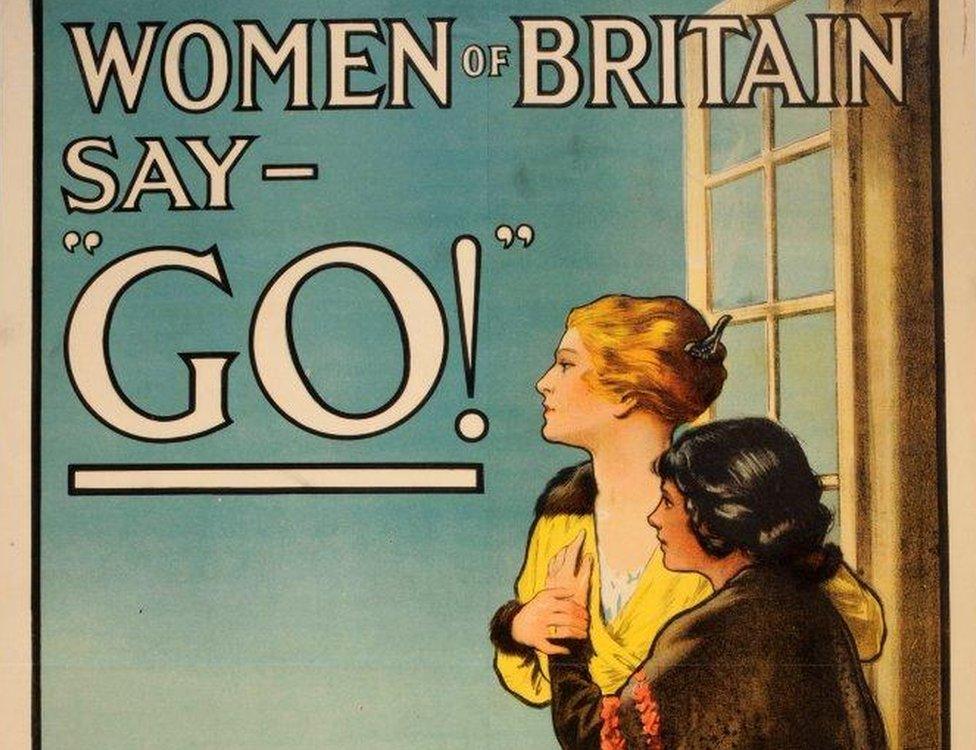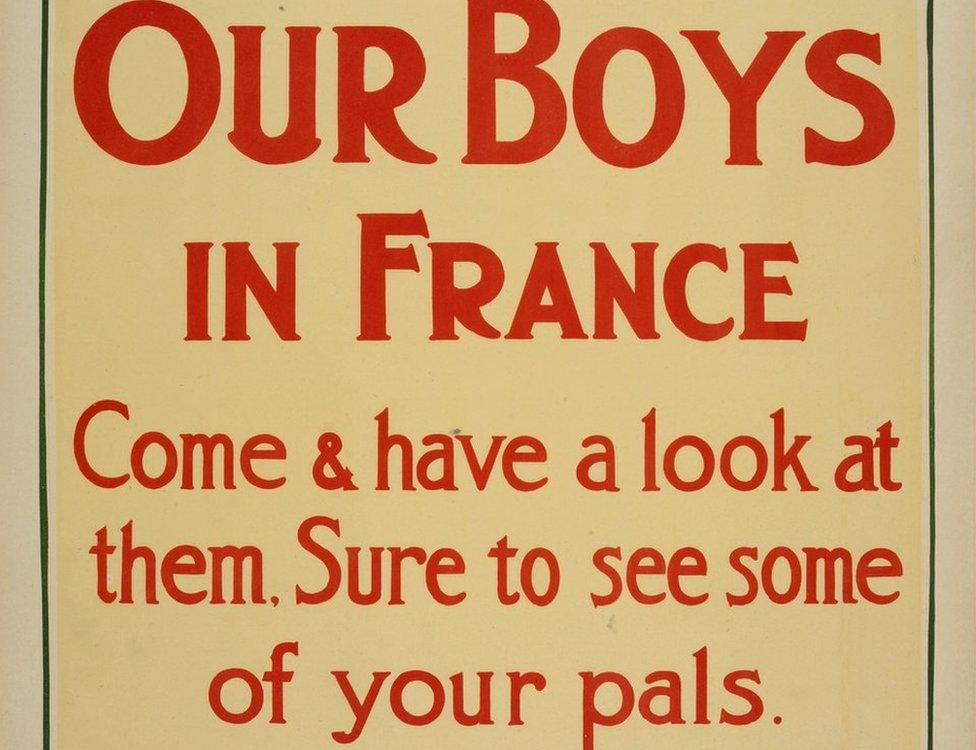World War I: Poster exhibition opens at the Ulster Museum
- Published
An exhibition featuring original posters from World War I has opened at the Ulster Museum.
The Answer the Call exhibition covers war campaigns from 1914 to 1918.
It features posters encouraging enlistment as well as "home front" activities.
Curator of history for National Museums Northern Ireland, Dr Vivienne Pollock, said the exhibition tracked an interesting change in tone and method as the war progressed.

Almost 6,000,000 posters of more than 140 different designs were commissioned
"The exhibition was curated to reflect the fascinating shifts in approach during the war," she said.
"In 1914, the enlistment campaigns appealed to patriotic and moral values as well as a sense of adventure.
"As the war continued, these public appeals increased in their sense of urgency and their methods became more varied and sophisticated.

By the end of 1915, 89,000 Irishmen had joined the British Army, with numbers equally split between Ulster and the rest of Ireland
Dr Pollock said the exhibition featured some very recognisable posters as well as lesser known ones aimed specifically at Irish audiences.
She said the posters showed the messages Britain wanted to communicate during the war period, from appeals to volunteer for the army to calls for financial assistance and support for the wounded.
"The varying styles were designed to appeal to a range of groups and classes of people," she said.
Almost 6m posters of more than 140 different designs were commissioned, with five large companies supplying over half the market.
One of these, the London arm of the Belfast-based firm David Allen and Sons, succeeded in winning orders for an estimated 1.5m copies of 40 different posters.
At the start of the war, text-based posters were used to encourage enlistment, but it was not until October 1914 that a more eye-catching national campaign was set in motion.

The varying styles were designed to appeal to a range of groups and classes of people
While many were produced by anonymous designers, some were drawn by well-known artists such as the military painter J.P. Beadle, whose poster is featured in the exhibition.
By the end of 1915, 89,000 Irishmen had joined the British Army, with numbers equally split between Ulster and the rest of Ireland, and between Catholic and Protestant, Nationalist and Unionist.
By 1918, 200,000 volunteers and conscripts were recruited in Ireland.

As the war continued, public appeals increased in their sense of urgency and their methods became more varied and sophisticated
Volunteering declined during 1915 and conscription was introduced in Britain in January 1916.
Answer the Call is part of National Museums Northern Ireland's series of events and exhibitions to mark the centenary of the outbreak of the First World War.
Admission to the exhibition is free.
It will run at the Ulster Museum until May 2015.